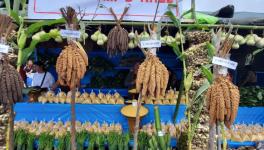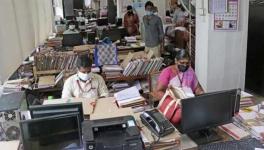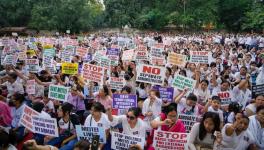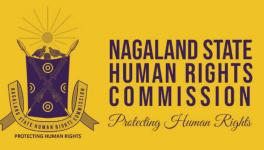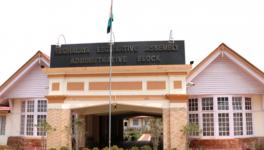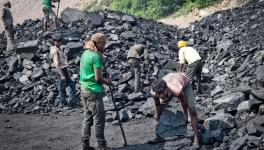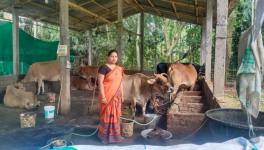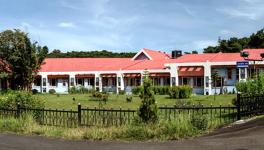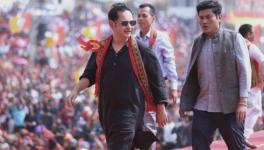Twin Pressures Towards Unifying the People of the Northeast
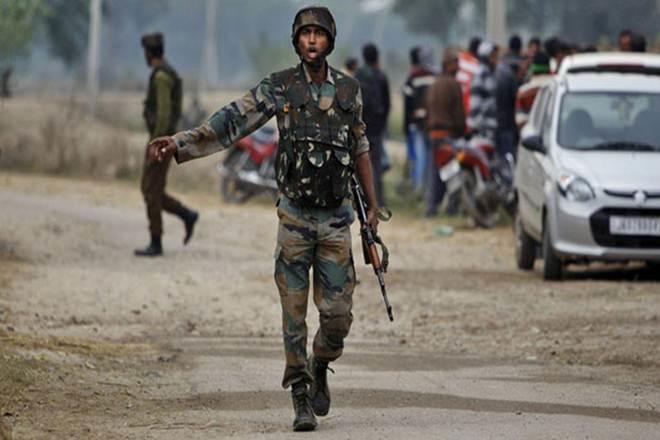
Image Coutesy: Financial Express
The recent ambush of Assam Rifles (AR) personnel in Mon district of Nagaland is significant, not only for the implications it presents the negotiating parties to the Indo-Naga framework agreement with, but also for the larger prospects for peace in the Northeast. On June 17, a patrol of the AR was attacked by members of the National Socialist Council of Nagaland (Khaplang) (NSCN(K)) and the United Liberation Front of Asom (Independent) (ULFA(I)). The attack was a typical guerrilla ambush consisting of an improvised explosive device (IED) blast followed by automatic and semi-automatic fire. The attack left one Havildar of the AR and one Sepoy of the 164 Territorial Army (Naga) Batallion dead, while injuring two others. At first, the media reported the attack as consisting solely of NSCN(K) cadres, however, Paresh Baruah, the Chairman of ULFA(I) stated that the ambush was a 'joint operation'.
Unlike what is often perceived, that the insurgents in the Northeast operate independently of each other, and often come into conflict with one another, the trend in recent years shows that such joint operations are a reality and will most probably continue to be so. The recent rise of cooperation between groups began with the attack on the 6thDogra Regiment in Manipur on June 4, 2015. The attack was orchestrated by a combined force of cadres from the Kangleipak Communist Party (KCP), the Kanglei Yawol Kanna Lup (KYKL) and the NSCN(K) leaving 18 soldiers dead and 11 injured. This ambush took place after the NSCN(K) had walked out of its cease-fire agreement with the government of India. The Indian government's response was the famed 'surgical strike' which was followed by a dose of chest thumping. However, the strikes only ensured political mileage far away from the scenes of the conflict. The attack announced the creation of the United National Liberation Front of Western South East Asia (UNLFW).
The UNLFW, however, is not the first time a proposal was made to join the various insurgent groups under a single umbrella organisation. The Meitei insurgent groups largely operate under the aegis of the Coordination Committee (CorCom). In 1990, under the leadership of R K Meghen (Sanayaima), the United National Liberation Front (UNLF) – a valley based Manipuri insurgent group – attempted to create the Indo-Burma Revolutionary Front along with the then undivided ULFA, NSCN(K), and the Kuki National Army (KNA). However, this experiment was short lived due to infighting. The UNLFW was formed April 17, 2018, and comprises of ULFA(I), NSCN(K), the National Liberation Front for Bodoland (Songbijit) ((NDFB(S)), Kamptapur Liberation Organisation (KLO), and the now-defunct Garo National Liberation Army (GNLA). This conglomeration would have included the CorCom, however, CorCom's demand was that Sanayaima be made the Chairman of the UNLFW. The other organisations stated that this would not be possible since Sanayaima had been arrested and was in incarceration. The result was that CorCom provided external support without formally joining the alliance. What is significant is that the teams which carry out the ambushes are so small in number that any group could conduct them independently. That these ambushes have been occurring with insurgents from different groups fighting alongside also shows that there is a sense of trust between groups.
The security establishment has viewed these developments with scepticism. One view is that this grouping will be short-lived, and the defunct IBRF is cited as an example. Another view is that this alliance was created at the behest of China, while others state that this shows the Northeast's insurgents are on the ropes, by citing the plummeting rates of fatalities due to insurgent activity. However, Rajeev Bhattacharyya, who wrote Rendezvous with Rebels: Journey to Meet India’s Most Wanted Men, based on his visit to the camps in Myanmar, refutes most of these theories. According to him, the groups had already reached some sort of an understanding. Thus, one may say that the UNLFW is only formalising the already existing trust. The question for the security establishment in India – and to an extent Myanmar – is whether these insurgent groups can translate this cooperation into something larger which garners civilian support.
It has already been documented through Duncan McDuie Ra's ethnographic study called Northeast Migrants in Delhi that there is a growing formation of a pan-ethnic identity among the migrants from the Northeast at least in Delhi. Within the region, the Northeast Students Organisation (NESO), headed by the All Assam Students Union's (AASU) advisor, Samujjal Bhattacharya has at least in name created a common platform for student organisations across the region. NESO at present has managed to garner support from student unions across the region against the Citizenship Bill. Apart from Sikkim – which does not have a powerful youth lobby – all the other states' student unions are allied with NESO. Outside the region, the Northeast Forum for International Solidarity (NEFIS), based in Delhi raises issues affecting the region and the diaspora as and when they arise. The forum is outspoken against the manner in which the Indian state tends to treat the region as 'exotic', showcasing only the 'cultural' performances and not the real issues and the voices of the people. In this regard, one may say that the existence of these platforms supports McDuie Ra's research findings.
The Bezbaruah Committee Report did not specifically refer to any pan-ethnic identity, but the fact that the report was titled “Report of the Committee Under the Chairmanship of Shri M.P. Bezbaruah To Look Into the Concerns of the Peoples of the Northeast Living in Other Parts of the Country”, places the Northeast as more than just a geographic zone. The committee was constituted following the death of Nido Tania, a student from Arunachal Pradesh, in Delhi. Nido Tania had died of his injuries after getting into an altercation with some locals in Lajpat Nagar on January 29, 2014. Ironically his death came after a group from Arunachal Pradesh had taken part in the Republic Day Parade three days earlier. The report's introduction refers to the fact that “the number of incidents involving the people from the North East is proportionately very high considering the small number of people from the region living in Delhi”. The introduction also referred to the sense that the negative experiences of the Northeastern migrants living outside fuel a sense of resentment. These stories travel back to their homelands and “fuel the already strong feeling of alienation among the youth and encourage separatist movements”. Whether this assertion at the start of the report holds true is debatable. However, efforts – both governmental and non-governmental – to group the region under a single umbrella can play a role in creating solidarity among the people of the region, if not a singular identity.
The Indian government's role in grouping the states and the region under a single umbrella can be seen in the formation of the Ministry of the Development of the North East Region (MDONER). MDONER owes its inception to the first grouping of the Northeastern states under the umbrella of the North East Council (NEC) which functions as a planning body, though it originally was set up as an advisory body. The states are represented in the NEC by their Chief Ministers, and the Council also takes up various issues which cut across state borders. On the other hand, the Bharatiya Janata Party's (BJP) creation of the Northeast Democratic Alliance (NeDA) – though a politically partisan exercise – is another push to place the region under a single command. However, there are still very real differences between communities such as the boundary disputes between Assam and almost every other state. As well as contested and often conflicting histories between communities. Grouping the region through such officially sanctioned forums, on the other hand, may go in the direction of breaking down the walls between communities and repairing relations if not rebuilding them.
The UNLFW's statements routinely refer to the people of 'Western South East Asia' (Wesea) instead of the 'Northeast'. This already signifies that the organisation rejects the terms coined by Delhi when referring to the region. Other statements refer to the 'common struggle', signifying an alliance based on more than mere opportunism. Similar statements have also been issued by CorCom and its constituent groups at regular intervals. It is still not clear whether the alliance views the region as composite with a future as a single separate political entity, or whether it is only to offer support to each other's individual separatist movements. However, repeated statements calling for unity, as well as the occasional propaganda video on YouTube does represent a shift in thinking within the underground.
This then relates to the ongoing parleys between the pro-talks faction of ULFA, ULFA (Progressive) and the Indian government on one side, and the NSCN (Isak-Muivah) and the government of India on the other. ULFA(P) has given up on its demand for sovereignty, while in the case of NSCN(IM) nobody knows what the group has conceded. However, with the National Register of Citizens (NRC) to be published at the end of the month, and the ongoing Citizenship Bill imbroglio, ULFA(P) is in a difficult position considering Paresh Baruah has not joined the talks. In the case of the Naga issue, one does not know how much progress has been made. Six of the Naga Nationalist Political Groups (NNPG) had decided to boycott the talks following raids on their leaders' residences. However, bowing to public opinion, the groups have rejoined the negotiations. The ambush in Mon, however, represents a different set of problems. Firstly, that unless the Naga leadership is convinced that the people will not reject any agreement reached, it is unlikely that one can be accomplished before the end of the year. Secondly, the NSCN(K) is signalling that it is still relevant and capable of carrying out attacks, meaning that an unacceptable agreement may give greater legitimacy to the NSCN(K)'s armed movement.
At this stage, there are three points worth pondering. One, whether the actions of the government of India and the civil society groups from the region will actually result in a pan-ethnic unity. Two, whether the alliance between the insurgent groups will persevere towards a singular armed movement. Three, whether these two forces for pan-ethnic unity will converge at some point. One cannot say what the distant future holds, however, one can say that the trends show that there is a push towards uniting the people of the region under a single identity irrespective of whether it is Northeast or Wesea.
Get the latest reports & analysis with people's perspective on Protests, movements & deep analytical videos, discussions of the current affairs in your Telegram app. Subscribe to NewsClick's Telegram channel & get Real-Time updates on stories, as they get published on our website.









